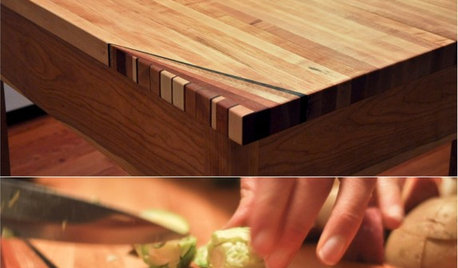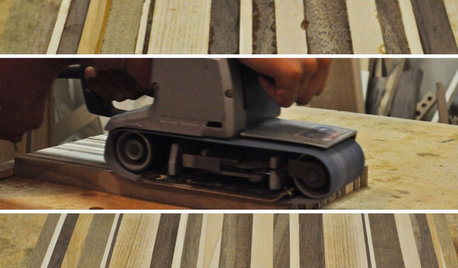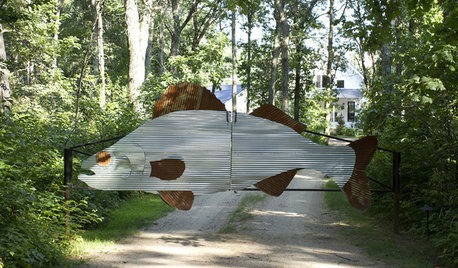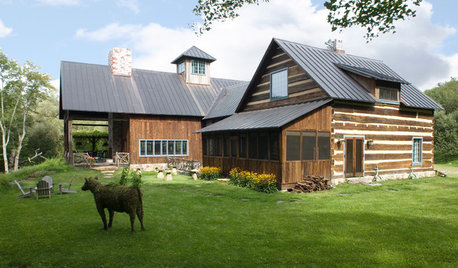Having a cow butchered - choice of cuts
liz_h
15 years ago
Featured Answer
Comments (32)
ladytexan
15 years agolast modified: 9 years agomorz8 - Washington Coast
15 years agolast modified: 9 years agoRelated Discussions
Cow Housing
Comments (12)We don't keep cattle now. However I have done a fair amount of work WITH cattle over the years. Milked Holsteins and did farm work after school for a couple years. We raised beef for a while, helped out my friends in working their animals, 4-H stuff. Some ranch work out in Montana, Wyoming. Lots of farmer/Cowman related discussion of what works, doesn't work, handling, good/bad experiences with many breeds, genders, ages. Quite a number of bulls around those places. I have been stalked by them while on foot, chased, had to hold down while they got doctored on the ranches. Well trained dog can be a lifesaver! No bulls I wanted to be around!! The places I worked milked about 100 cows twice daily, lots of young heifers, new calves. The milk money paid a lot of bills, had to be productive cows. This made daily routine critical. We needed healthy cows with good udders to milk. Had to get milk all out to keep production up, not damage the teats, prevent mastitis, take good care of the cows. LOTS of healthy feed and water. The ranchers were extremely picky about having calm, quiet cattle. Got angry with careless handling by riders, chute folks. They wanted cattle you could walk around in, out in the big pastures, easy to handle for doctoring. One guy wouldn't have any kind of feisty cow or bull. He really knew all his stock. If a cow or bull got testy or rank as it aged, he would go back and cull out all the stock related to the original animal, sell them off. "Bad breeding breeds true" was one of his quotes. Wasn't going to have bad cattle on his place! His cattle WERE exceptional to work with. You watched, but never had any bother us when we had to walk among them to fix a problem. Some breeds were more testy, got upset quickly with handling, gathering up. Cows DO NOT like being hurried. Dairy cows can get hysterical if pushed hard, big routine is changed, then bad things happen. Usually so calm, easy going, you get careless, complacent in handling. Cows are teachable, which is why routine can be your friend. I never understood why folks thought that the expression "It will happen when the cows come home" meant never. The dairy cows were like clocks. They came home from pasture at 4:30P EVERY DAY. Ready to be milked. I like cows, just not a pet like a dog. We named the ones at home....See MoreFinish for butcher block countertops -- NOT for cutting
Comments (5)My opinion of "plasticky" is more at the handle end of the brush than the bristle end, if you catch my drift. Waterlox Original has a dark amber cast to it. This would be the only disadvantage to choosing it, if you object to that. Last time I used it it was on a dry sink converted to vanity. It worked well, color wise, as the top (a new replacement piece) was stained and glazed to a burnt sienna red, so the Waterlox blended right in. I used my standard varnish regimen: - Two coats thinned 50-50 (Varnish to mineral spirits) - Light sanding - One coat thinned 60-40 more or less, light sanding when dry - Two coats thinned 90-10 It's not going to burn in like a lacquer or shellac, but it sands well and you can clean, sand and recoat in the future....See MoreAnyone have a butcher block counter they cut on?
Comments (19)Growing up, my mom had a built in cutting board. I don't remember squares, so it must have been long runs of wood. I sure am glad I grew up before the media invented germs. We cut everything on it and just cleaned it with Windex. That's all. I don't recall her ever oiling it, never salting it, never, God knows, sanding it. Just Windex. Then the towel was hung over the base cabinet door for the next use. We baked on it, made sandwiches for lunch on it, cut cold-cuts on it, chicken, stew meat, dough, I do mean everything. Probably my own fingers at times, since I cut myself a lot. I do recall opening a can and slicing both thumb and index finger trying to get the lid off. On that counter... I just made my own 24" and 14' wood counter tops (10-12' pieces of maple). Can't call them butcher blocks because I don't want to rile the purists. I haven't done anything about sealing them yet, because I want to color them. My trouble is maple splotches and I want to do it right. Anyway, by the stove, I'll probably cut on it. Where it goes into the dining area? Probably not....See Moremamadadapaige and any other butcher block owners
Comments (4)I think it held up fairly well, as we did not cut directly on the butcher block. It did get stained from time to time but we were always able to get the stains out, or if there were some really bad ones, we sanded and re-oiled. Once or twice over a 30 year period we did a fairly extensive sanding. The only stains that were tough were berries (we grow raspberries and do a lot of processing) and the other really fatal mistake is leaving an ammonia bottle on the wood -- produces a dark ring that is hard to get out. But, I liked them so well that we are going to use butcher block again. I just like the softer surface for working on -- for many of the same reasons that many people like wood floors....See Moregran2
15 years agolast modified: 9 years agoliz_h
15 years agolast modified: 9 years agoksrogers
15 years agolast modified: 9 years agohighdesertlocavore
15 years agolast modified: 9 years agodavid52 Zone 6
15 years agolast modified: 9 years agoladytexan
15 years agolast modified: 9 years agoksrogers
15 years agolast modified: 9 years agosnappybob
15 years agolast modified: 9 years agodavid52 Zone 6
15 years agolast modified: 9 years agoshirleywny5
15 years agolast modified: 9 years agoksrogers
15 years agolast modified: 9 years agomxbarbie
15 years agolast modified: 9 years agoksrogers
15 years agolast modified: 9 years agogran2
15 years agolast modified: 9 years agodavid52 Zone 6
15 years agolast modified: 9 years agosnappybob
15 years agolast modified: 9 years agogran2
15 years agolast modified: 9 years agoannie1992
15 years agolast modified: 9 years agomorz8 - Washington Coast
15 years agolast modified: 9 years agoreecep1_comcast_net
15 years agolast modified: 9 years agoksrogers
15 years agolast modified: 9 years agogran2
15 years agolast modified: 9 years agoWendy Atkin
8 years agogreenbean08_gw
8 years agoWendy Atkin
8 years agoliz_h
8 years agoliz_h
8 years agogreenbean08_gw
8 years agoliz_h
8 years ago
Related Stories

WOODWORKINGHow to Clean and Care for Your Butcher Block
Keep butcher block counters and boards looking sharp as a knife — and sanitized for safe food prep — with this advice from a pro woodworker
Full Story
DIY PROJECTSFashion a High-Quality Cutting Board From Scrap Wood
Waste not, want not. This DIY project saves scraps from the landfill, hones your woodworking skills and produces a gorgeous kitchen piece
Full Story
KITCHEN COUNTERTOPSKitchen Counters: Tile, the Choice for Affordable Durability
DIYers and budget-minded remodelers often look to this countertop material, which can last for decades with the right maintenance
Full Story
MOST POPULARHouzz Quiz: What Style of Kitchen Should You Have?
Should you be cooking up a storm in a modern, traditional, farmhouse or another style of kitchen? Take our quiz to find out
Full Story
KITCHEN DESIGN20 Kitchen Must-Haves From Houzz Readers
We asked you to tell us your top kitchen amenities. See what popular kitchen features made the list
Full Story
FUN HOUZZ11 Ways to Have More Fun at Home
Every house needs a touch of humor — a funny sign or an accessory that always makes you smile. Here’s where to begin
Full Story
REMODELING GUIDESGet What You Need From the House You Have
6 ways to rethink your house and get that extra living space you need now
Full Story
KITCHEN DESIGNHaving a Design Moment: The Kitchen
Take a peek at 11 design opportunities you shouldn't overlook in the kitchen
Full Story
LIFEThe Polite House: Do I Have to Display Decor Given to Me as a Gift?
Etiquette columnist Lizzie Post tackles the challenge of accepting and displaying home decor gifts from frequent visitors
Full Story
RUSTIC STYLEHow to Outfit a Classic Farmhouse
You could research farmhouse decorating choices until the cows come home. Or you could just check out our hand-picked roundup here
Full Story


ediej1209 AL Zn 7